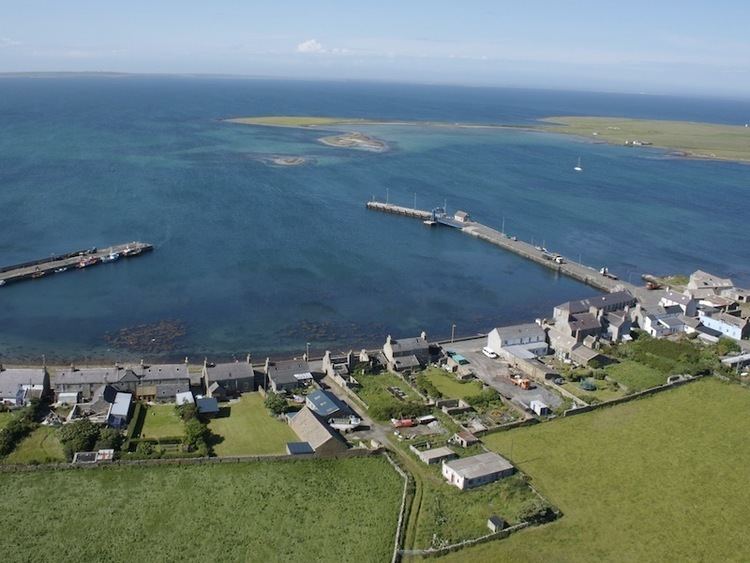Norse name Strjónsey Area rank 27 Area 32.75 km² | OS grid reference HY669239 Council area Orkney Island groups Orkney, British Isles | |
 | ||
Highest elevation Burgh Hill 44 metres (144 ft) | ||
Traditional catholic monks of papa stronsay scotland
Stronsay is an island in Orkney, off the north coast of Scotland. It is 3,275 hectares (13 sq mi) in size, and 44 metres (144 feet) at its highest point and has a usually resident population of 349. The main village is Whitehall, home to a heritage centre.
Contents
- Traditional catholic monks of papa stronsay scotland
- Map of Stronsay Orkney UK
- Orkney ferries varagen docking at island of stronsay orkney scotland
- Geography and geologyEdit
- PrehistoryEdit
- 18th and 19th centuriesEdit
- Present dayEdit
- WildlifeEdit
- References
Map of Stronsay, Orkney, UK
Sights on the island include the Vat of Kirbister, a natural arch described as the "finest in Orkney" and various seabirds amongst which are Arctic terns.
Orkney ferries varagen docking at island of stronsay orkney scotland
Geography and geologyEdit
As with most of Orkney, Stronsay is made up of Old Red Sandstone which has produced a fine soil in many places. It is generally low lying.
With an area of 33 square kilometres (13 sq mi) it is the seventh largest of the Orkney Islands. Surrounding small islands include Linga Holm, Papa Stronsay, the Holm of Huip (named after a district in north west Stronsay) and the Holms of Spurness. To the north is Sanday, to the north west Eday, Shapinsay and Mainland Orkney to the south west, and Auskerry due south.
PrehistoryEdit
Two flint arrowheads discovered at a site investigated by Orkney College in April 2007 are believed to date from the late Paleolithic or early Mesolithic periods some 10-12,000 years ago. They were found amongst a scattered collection of other tools on a farm. If confirmed, they could be the earliest human artifacts found in Scotland.
18th and 19th centuriesEdit
The island is now agricultural, but during the 18th and 19th centuries, kelp collection and herring curing employed up to five thousand people. The population, which is high for a Scottish island, was over a thousand for the entire 19th century through the mid-20th century, with the 1891 census recording a population of 1275 people, excluding seasonal itinerants involved in the herring industry.
The kelp burning industry was started by James Fea of Whitehall in 1727, and thrived during the remainder of the 18th century, lasting into the early 19th century; some of the kiln ruins can still be seen.
The Stronsay beast was a mysterious, decomposing corpse of a sea-creature that was stranded in 1808. The carcass measured 55 feet (16.8 m) in length, with the "neck" 15 feet and the circumference of the body 10 feet. The corpse created a great stir, with some proclaiming it a sea serpent, but others have claimed it was a decayed basking shark.
Present dayEdit
The usual resident population of the island in 2011 was 349, compared to 342 in 2001. Orkney Ferries sail from Whitehall to Kirkwall on the Orkney Mainland, and planes fly there from the island's airstrip. There is one school on the island which is for both primary and secondary pupils.
Moncur Memorial Church is the Church of Scotland centre of worship on Stronsay and there is a Catholic chapel in Whitehall, which is part of the Diocese of Aberdeen.
WildlifeEdit
While the landscape has very few trees, the fertile soil supports a wide variety of wild flowers including oysterplant, frog orchids, adder's tongue, and also a naturalised population of Patagonian ragwort.
There are a wide variety of birds on the island, and birdwatchers have recorded many rarities. Common species include whooper swan, various ducks and geese including the greater white-fronted goose, as well as common redshank, common snipe, common quail, great skua, corn bunting and corncrake, the last of which is rare in Scotland.
The more unusual occasional visitors which have been recorded include:
